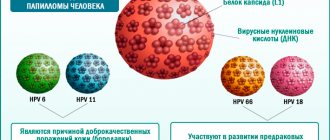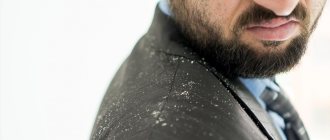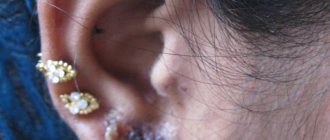Causes of exfoliative dermatitis
The occurrence of exfoliative dermatitis is caused by the action of exotoxins of Staphylococcus aureus (Staphylococcus aureus), which cause severe inflammation of the skin, its stratification and detachment. In adults, the disease can develop in the presence of severe somatic diseases (renal failure) or immunodeficiency.
In children, Ritter's dermatitis occurs mainly in the first year of life due to the immaturity of the immune system (antistaphylococcal antibodies are not produced) and the slower breakdown and elimination of pathogenic exotoxins from the body.
Treatment for babies
Treatment of Ritter's exfoliative dermatitis in newborns is carried out only in a hospital. The baby is in the room with his mother. The child is in a separate ditch. Children are prescribed medications that are administered intravenously. These are cephalosporin antibiotics (cephaloridine), which are effective against various diseases and are not toxic.
A group of antibiotics with a bactericidal type of action eliminates bacteria by inhibiting cell wall synthesis, so the drug acts effectively and quickly, accelerating the healing process.
To prevent dehydration, treatment with Polyglucin solution is used or Hartmann's saline solution (Ringer's solution with lactate) is used. Newborns and infants may require additional glucose administration. A 10% or 20% solution is injected. To prevent the formation of dysbiosis due to the introduction of antibiotics into the body, the doctor may prescribe probiotics.
Healthy areas of the skin are treated with Fukortsin solution, and the blisters are opened.
Symptoms of exfoliative dermatitis
Exfoliative dermatitis has several stages of disease development, and their characteristic symptoms, but in addition to the stages, a general clinical picture can be distinguished:
- The skin on different parts of the body may become sensitive and painful;
- There is diffuse redness of the skin, the most pronounced changes are in the face and neck, large folds (inguinal, axillary)
- The skin peels off in large layers and leaves behind extensive erosions.
- The child’s general well-being suffers (fever, drowsiness, tearfulness, loss of appetite and weight, etc.)
Symptoms of exfoliative dermatitis by stage:
- 1. Erythematous (initial) stage – the skin turns red, swelling is noted
- 2. Exfoliative – a dangerous period of the disease, occurs several days after the onset of the disease. The skin in places of redness begins to peel off (Nikolsky's symptom), leaving behind erosions; the lesions merge with each other, affecting large segments of the skin.
- 3. Regenerative (final) stage – symptoms of the disease subside, large lamellar peeling is noted
Complications of exfoliative dermatitis include the development of bacterial otitis, pneumonia, phlegmon, and pyelonephritis. In severe cases, death is possible.
You can see the signs of exfoliative dermatitis in adults and children in the photo section.
If the course of the disease is mild (small affected area, absence of papules), recovery occurs within two weeks.
Exfoliative dermatitis in newborns and adults: symptoms and treatment of the disease
Ritter's exfoliative dermatitis is a dermatological disease that develops as a result of infection with staphylococci.
Medicine knows of cases where characteristic symptoms were formed as a result of a mixed infection (staphylococcal and streptococcal).
Premature babies in the first or second week of life, babies with low body weight and babies who have suffered birth trauma are most often affected.
Reasons for the development of exfoliative dermatitis
The development of pathology is facilitated by the immaturity of the barrier function of the skin and the lack of its own immunity. Infection occurs in most cases in maternity wards from mother to child or from medical personnel caring for infants.
The source of infection can be a focus of purulent infection located on the child’s body (inflammation of the umbilical ring), or other sick children nearby. The pathogen is transmitted through contact and household contact through hands and tools.
Symptoms of the disease
Ritter's dermatitis begins with the appearance of a red area around the mouth. The skin becomes swollen and inflamed. The pathology progresses rapidly. After some time, new territories are “captured”: inflammation spreads to the neck, navel area, genitals and covers the entire perineum. In severe cases, the entire body is affected within two to three days.
Large blisters with liquid inside form on the inflamed areas of the skin. They open easily and weeping erosions form in their place. If you grab the skin around them with tweezers, it will peel off easily. Healthy skin also peels off, exposing the deeper layers of the dermis.
The child experiences severe pain, refuses to eat, rapidly loses weight, sleeps poorly, and is constantly capricious. He may develop a high body temperature, vomiting and diarrhea.
Stages of development of exfoliative dermatitis
In its development, Ritter's dermatitis goes through three stages:
- In the first stage, the skin becomes red and swollen, and blisters appear on it.
- At the second stage, liquid (exudate) collects inside the blisters, which contributes to the peeling of large areas of the skin. In place of the opened blisters, constantly weeping erosions are formed, located nearby, they are able to merge with each other. Outwardly, it looks as if there are second-degree burns on the child’s body. The exfoliative stage leads to intestinal disorders.
- At the third stage, the intensity of the pathological process begins to decline: body temperature decreases, diarrhea and vomiting stop, erosions heal and gradually heal, swelling of the affected areas decreases, and signs of the inflammatory reaction disappear.
Experience in monitoring sick children shows that there is a relationship between the severity of the infection and the age of the baby.
So, for example, if the pathology started in newborns in the second to sixth week from birth, the disease will be very severe with complications in the form of pneumonia, peritonitis, otitis media or even meningitis.
If infection occurs in the second or third week, Ritter's dermatitis is always mild.
Development of the disease in adults
The development of Ritter's dermatitis in adults can be caused by long-term use of antibiotics or corticosteroids. A similar reaction can develop as a result of an infectious disease or the use of hard drugs. Often it acts as an additional symptom indicating the course of psoriasis, seborrhea, and atopic dermatitis.
Exfoliative dermatitis manifests itself in the same way as in infants, only the clinical picture in adults is more pronounced.
- Body temperature rises to 38 degrees and above.
- Large, relaxed bubbles form on the body.
- The skin around them itches, swells, and becomes red.
- Inside the rash elements there is a large amount of exudate.
- When the bubbles burst, the liquid pours out.
- In their place, red erosion is exposed.
- The skin remaining from the blister peels off.
- Externally, the affected area looks like a huge second-degree burn.
This whole picture develops against a background of general malaise, patients complain of local or total enlargement of lymph nodes, and the presence of signs of gastrointestinal disorders. If left untreated, the infection in adults does not go away on its own: huge red spots spread throughout the body, and the person experiences severe pain.
You can get Ritter's dermatitis at any age. At risk are people over forty years of age, patients who are forced to take antibiotics for a long time, or undergo radiation therapy.
The disease is often diagnosed in pregnant women.
Doctors explain this by saying that their body is experiencing strong changes due to hormonal changes, the immune system is noticeably weakening, so infection becomes possible.
Diagnostic measures
The diagnosis is made based on clinical manifestations and the presence of Nikolsky's sign (skin peeling). To identify the pathogen, a PCR reaction is carried out and bacteriological culture is performed. The contents of the bubbles are used as biological material for it. A test for congenital syphilis is required.
Ritter's dermatitis in children and adults is differentiated from burns, epidermolysis bullosa, Liner's erythroderma, and congenital syphilis.
Drug therapy for exfoliative dermatitis
Treatment is carried out in two directions: the patient is prescribed antibiotics for oral administration, creams and ointments with an antibacterial effect. In severe cases, corticosteroids are used. To strengthen the immune system, vitamins C and B are prescribed. Infants are advised to drink plenty of fluids to prevent dehydration.
Since wearing any clothing causes unbearable pain to babies, they are simply swaddled loosely in diapers previously sprinkled with zinc oxide or talc, to which antibiotic or sulfonamide powders have been added. It is advisable to immediately place sick newborn children in special cuvettes that allow maintaining optimal temperature and humidity.
In adults, the blisters are opened, the remaining skin is removed, the erosions are generously covered with antiseptic solutions, and then treated with ointments that contain glucocorticosteroids. Bathing in water with potassium permanganate is shown.
At the same time, the patient must take antibacterial drugs orally, agents that help quickly remove toxins from the body.
Prevention of exfoliative dermatitis
Regular examination of maternity hospital staff and mothers carrying babies for the presence of staphylococcus helps prevent infection of newborn children. Wards in modern maternity hospitals must be regularly quartzed and wet cleaned.
Medical personnel should enter the delivery room only with gauze bandages on their faces. After discharge from the maternity hospital, all preventive measures are assigned to the parents.
They must carefully monitor their own hygiene and the hygiene of their infants, and strictly adhere to existing sanitary standards.
Source: https://mfarma.ru/dermatologiya/razvitie-eksfoliativnogo-dermatita-rittera
Treatment of exfoliative dermatitis
If symptoms characteristic of Ritter's dermatitis appear, you should immediately consult a specialist (dermatologist or infectious disease specialist) to confirm or exclude the diagnosis. A doctor can easily diagnose this disease, but research is necessary to exclude diseases that have similar symptoms - Lyell's syndrome, Kawasaki disease, toxic shock.
To confirm the diagnosis, you can conduct a bacteriological study - perform a smear or culture from the areas of the primary source of infection (umbilical wound, nasal cavity or oropharynx, etc.)
Treatment of exfoliative dermatitis is carried out in a 24-hour hospital setting. Antibacterial drugs are used taking into account the sensitivity of the flora, and corrective therapy is also carried out to maintain the functioning of other organs. For local use, ointments with antibiotics and solutions with antiseptics are used.
Preventive measures
To prevent the development of the disease in question, you must adhere to the following recommendations from experts:
- carefully monitor the health of the skin and promptly detect dermatitis;
- fully treat any skin diseases;
- follow the diet recommended by the attending physician for the existing disease.
Exfoliative dermatitis is a rather unpleasant disease that requires long-term treatment and compliance with certain restrictive measures. But at the same time, doctors give a favorable prognosis provided that professional medical help is sought.
Tsygankova Yana Aleksandrovna, medical observer, therapist of the highest qualification category
15, total, today
( 60 votes, average: 4.72 out of 5)
Acne on the chin in women: causes and treatment
Pellagra: symptoms and treatment
Related Posts
Treatment of exfoliative dermatitis using drugs from the Losterin line
Find out more: Vitamins Cream Emulsion Shampoo Gel Lotion Paste Foot Cream Cream Soap
Line of products Losterin
Designed for daily skin care in the complex treatment of chronic skin diseases - psoriasis, eczema, atopic dermatitis .
The preparations contain a balanced combination of active ingredients ( resin-free naphthalan, urea, salicylic acid, medicinal herbal extracts, natural oils ) selected for the most effective therapeutic effect on the skin for various skin diseases.










